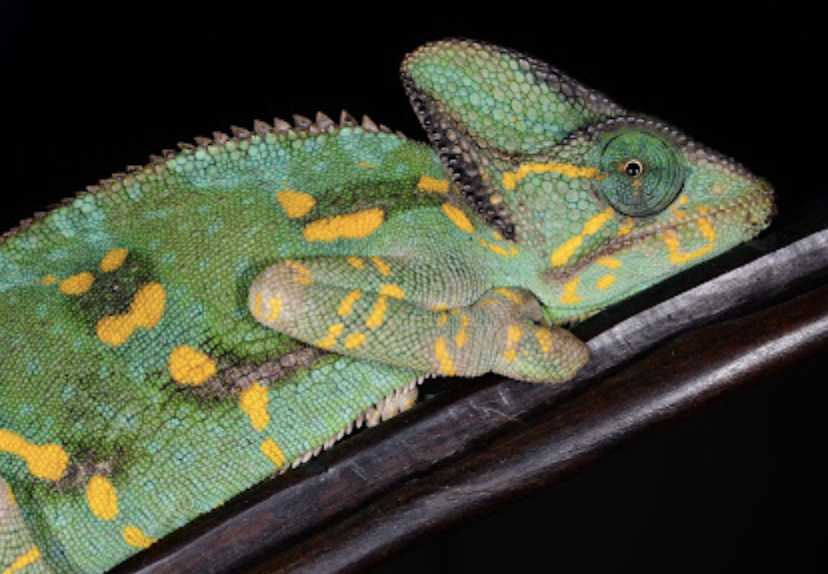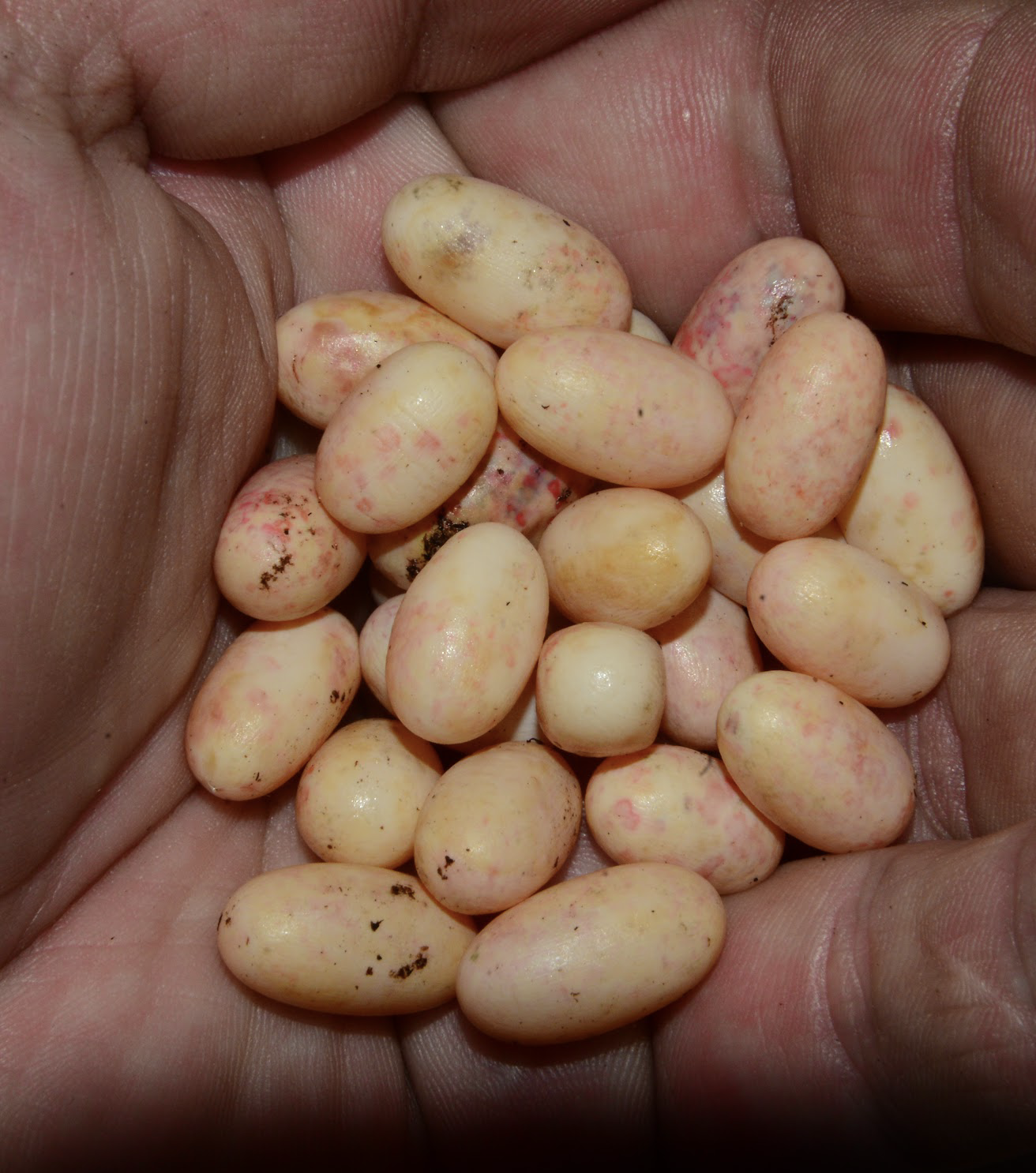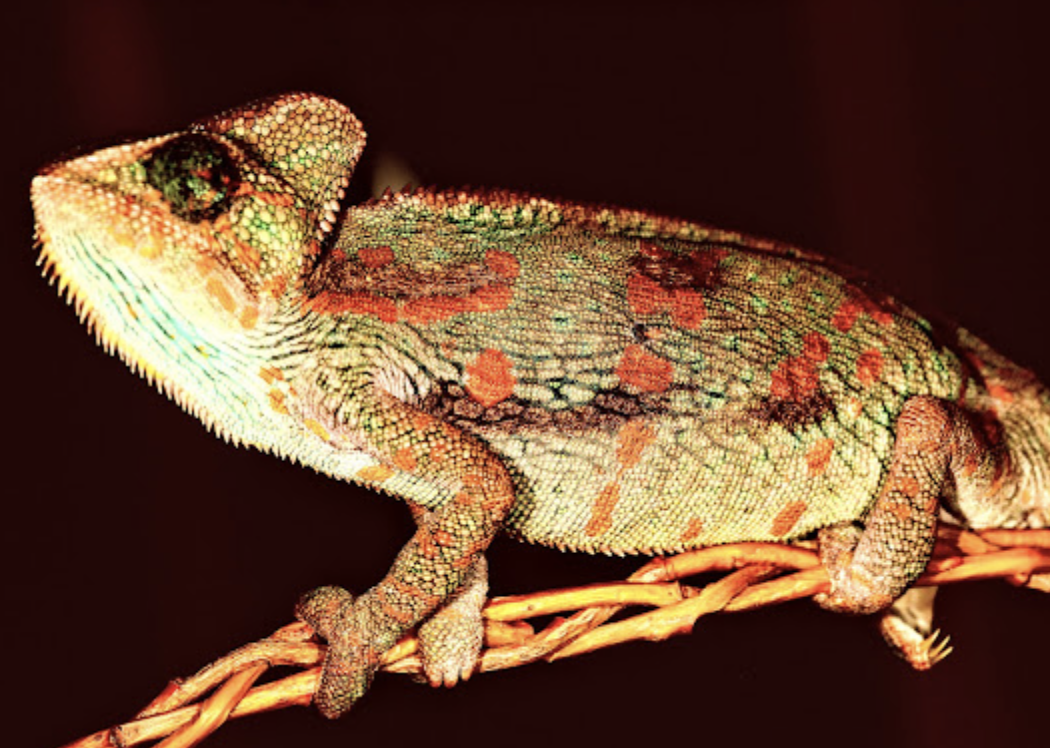Dependence of Egg Production, Feeding, and Temperature in Yemen Chameleons



The Myth
Whether by circumstance or deliberate choice, many reptile keepers end up raising female Yemen chameleons (Chamaeleo calyptratus). After several months, they are often shocked when their female chameleon, despite never having encountered a male, begins changing colors and later lays a clutch of eggs.
Within herpetology communities, a widespread myth persists—the claim that female chameleons will inevitably lay eggs, no matter what you do, like chickens. This is entirely incorrect. Unlike birds, chameleons do not have a fixed or automatic reproductive cycle. Their egg production and clutch size are regulated by key environmental and physiological factors, particularly temperature and food reserves.
If we increase the temperatures at which we keep Yemen chameleons, their metabolism accelerates, leading to a faster life cycle. They require more food and water within the same time frame to maintain homeostasis—their steady body weight and metabolic balance.
A Metaphor for Their Life Cycle
Imagine their life as a chewing gum:
At lower temperatures, the gum is stretched over a longer period, meaning the chameleon eats less per day and lives longer.
At higher temperatures, the gum is stretched more quickly, meaning the chameleon eats more per day but lives a shorter life.
However, the total amount of food consumed remains roughly the same—whether they live 3–5 years or up to 16 years, under ideal conditions without disease, predation, or accidents.
This principle applies primarily to males, and partly to females, but in females, another mechanism comes into play.
Food and Egg Production in Female Chameleons
For females, additional energy intake is necessary for egg production. Higher temperatures not only increase their metabolic demands, but also activate their hormonal system, signaling the onset of the reproductive period. This results in an increased appetite, ensuring sufficient energy and nutrients for egg development.
To illustrate this dependence, consider the following example:
Conditions Daily Food Requirement
Female at 72°F/60°F (day/night) 1 cricket per day (low metabolism, no egg production)
Female at 85°F/72°F (day/night) 3 crickets per day (higher metabolism, but no eggs)
Female producing eggs at 85°F/72°F 8 crickets per day (3 for metabolism, +5 for egg development)
Impact on Clutch Size
The number of eggs in a clutch depends on the amount of food available:
If only 3 crickets/day are provided, the clutch size will be small (15–25 eggs), and the female may lose weight during gravidity.
If 15–20 crickets/day are provided, the clutch can reach 60–70 eggs, as the female will invest excess energy into increased egg production.
If only 2 crickets/day are provided, the female may:
Lose significant weight due to inadequate resources.
Extend the gravidity period by several weeks.
Mummify follicles or developing eggs due to nutrient deficiency.
Fat Reserves and Their Role in Egg Formation
A female must build fat reserves prior to gravidity, as egg numbers are predetermined before fertilization. These reserves define the clutch size, and additional food after the onset of gravidity cannot increase egg numbers.
If a female receives only 2 crickets before gravidity, then 20 crickets afterward, she will produce fewer eggs, but gain excess fat tissue, potentially causing complications during egg-laying (fat deposits may block the oviducts, preventing smooth egg passage).
Ultimately, clutch size depends less on daily food intake and more on stored fat before gravidity.
A well-fed, overweight female will produce large clutches regardless of food availability during gravidity.
A severely underfed female may not produce any eggs, instead using all food intake for survival rather than reproduction.
Key Principles for Managing Reproductive Output
To prevent unwanted egg clutches, follow these two rules:
Do not overfeed: excess food leads to fat storage and larger clutches.Do not overheat: high temperatures trigger follicle development, ovulation, and egg production.
Both temperature and food reserves act as primary triggers for reproduction:
Higher temperatures start the process, encouraging follicle formation and ovulation.
Sufficient fat reserves dictate clutch size—if reserves are too low, the process may not start at all or may halt prematurely.